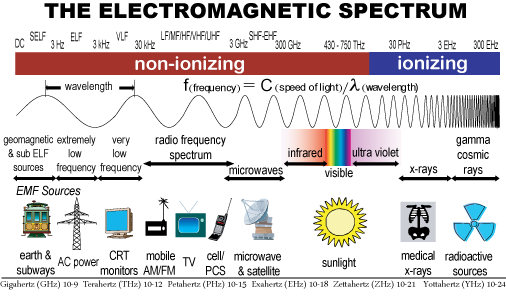Light, also known as electromagnetic radiation, is the set of transverse waves which consist of electric and magnetic fields oscillating at right angles to the direction in which the wave is travelling.
Video:
Click/tap here to load video
The properties of light
- Electromagnetic waves are transverse waves
- They do not need matter in order to propagate
- These waves can propagate in a vacuum
- In a vacuum, all wavelengths in the EM spectrum travel at the same speed (approximately $300,000,000\ m/s$ OR $3\times 10^8\ ms^{-1}$)
- All wavelengths do not travel the same speed while travelling through other media (for example, red light travels slightly faster in glass than blue light does)
- When waves cross from one medium to another (refraction) they do not change in frequency $f$
- The velocity $v$ and wavelength $\lambda$ are however affected in such a way that frequency remains unaffected (if the wave slows down then the wavelength has to become shorter; if the wave speeds up then the wavelength has to increase in size)
Hold a focus!
Q1: What kind of wave does a radio station send to your car radio?
- Air waves
- Light waves
- Sound waves
The electromagnetic spectrum
The electromagnetic spectrum consists of all electromagnetic waves ranging from those with very large wavelengths such as radio waves to those with unimaginably small wavelengths such as gamma rays. Only a small section is actually visible to humans (the visible spectrum).
Credits: Socratic
